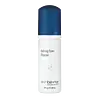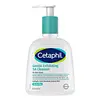What's inside
What's inside
 Key Ingredients
Key Ingredients

 Benefits
Benefits

 Concerns
Concerns

 Ingredients Side-by-side
Ingredients Side-by-side

Water
Skin ConditioningDisodium Cocoyl Glutamate
CleansingGlycerin
HumectantPolyglyceryl-10 Caprylate
EmulsifyingLauramidopropyl Betaine
CleansingPolyglyceryl-6 Caprylate
EmulsifyingPolyglyceryl-4 Caprate
EmulsifyingEthoxydiglycol
HumectantMagnesium Aspartate
Skin ConditioningZinc Gluconate
Skin ConditioningCopper Gluconate
Skin ConditioningGlycolic Acid
BufferingLactic Acid
BufferingSalicylic Acid
MaskingMalic Acid
BufferingBisabolol
MaskingHydrolyzed Jojoba Esters
Skin ConditioningBeta-Glucan
Skin ConditioningAlgin
MaskingTocopheryl Acetate
AntioxidantTocopherol
AntioxidantEthyl Macadamiate
Skin ConditioningSodium Cocoyl Glutamate
CleansingGlyceryl Caprylate/Caprate
EmollientXanthan Gum
EmulsifyingPentylene Glycol
Skin Conditioning1,2-Hexanediol
Skin ConditioningDecylene Glycol
Skin ConditioningSodium Chloride
MaskingCitric Acid
BufferingSodium Magnesium Silicate
Phytic Acid
Phenoxyethanol
PreservativeBenzoic Acid
MaskingSorbic Acid
PreservativeWater, Disodium Cocoyl Glutamate, Glycerin, Polyglyceryl-10 Caprylate, Lauramidopropyl Betaine, Polyglyceryl-6 Caprylate, Polyglyceryl-4 Caprate, Ethoxydiglycol, Magnesium Aspartate, Zinc Gluconate, Copper Gluconate, Glycolic Acid, Lactic Acid, Salicylic Acid, Malic Acid, Bisabolol, Hydrolyzed Jojoba Esters, Beta-Glucan, Algin, Tocopheryl Acetate, Tocopherol, Ethyl Macadamiate, Sodium Cocoyl Glutamate, Glyceryl Caprylate/Caprate, Xanthan Gum, Pentylene Glycol, 1,2-Hexanediol, Decylene Glycol, Sodium Chloride, Citric Acid, Sodium Magnesium Silicate, Phytic Acid, Phenoxyethanol, Benzoic Acid, Sorbic Acid
Water
Skin ConditioningGlycerin
HumectantCocamidopropyl Betaine
CleansingCoco-Glucoside
CleansingGluconolactone
Skin ConditioningBetaine
HumectantPEG-120 Methyl Glucose Dioleate
EmulsifyingSodium Cocoamphoacetate
CleansingGlycereth-26
HumectantSalicylic Acid
MaskingSodium Chloride
MaskingPanthenol
Skin ConditioningNiacinamide
SmoothingMandelic Acid
AntimicrobialSodium Citrate
BufferingSodium Hydroxide
BufferingHelianthus Annuus Seed Oil
EmollientTocopherol
AntioxidantPhenoxyethanol
PreservativeCitric Acid
BufferingEthylhexylglycerin
Skin ConditioningDisodium EDTA
Pantolactone
HumectantWater, Glycerin, Cocamidopropyl Betaine, Coco-Glucoside, Gluconolactone, Betaine, PEG-120 Methyl Glucose Dioleate, Sodium Cocoamphoacetate, Glycereth-26, Salicylic Acid, Sodium Chloride, Panthenol, Niacinamide, Mandelic Acid, Sodium Citrate, Sodium Hydroxide, Helianthus Annuus Seed Oil, Tocopherol, Phenoxyethanol, Citric Acid, Ethylhexylglycerin, Disodium EDTA, Pantolactone
 Reviews
Reviews

Ingredients Explained
These ingredients are found in both products.
Ingredients higher up in an ingredient list are typically present in a larger amount.
Citric Acid is an alpha hydroxy acid (AHA) naturally found in citrus fruits like oranges, lemons, and limes.
Like other AHAs, citric acid can exfoliate skin by breaking down the bonds that hold dead skin cells together. This helps reveal smoother and brighter skin underneath.
However, this exfoliating effect only happens at high concentrations (20%) which can be hard to find in cosmetic products.
Due to this, citric acid is usually included in small amounts as a pH adjuster. This helps keep products slightly more acidic and compatible with skin's natural pH.
In skincare formulas, citric acid can:
While it can provide some skin benefits, research shows lactic acid and glycolic acid are generally more effective and less irritating exfoliants.
Most citric acid used in skincare today is made by fermenting sugars (usually from molasses). This synthetic version is identical to the natural citrus form but easier to stabilize and use in formulations.
Read more about some other popular AHA's here:
Learn more about Citric AcidGlycerin is already naturally found in your skin. It helps moisturize and protect your skin.
A study from 2016 found glycerin to be more effective as a humectant than AHAs and hyaluronic acid.
As a humectant, it helps the skin stay hydrated by pulling moisture to your skin. The low molecular weight of glycerin allows it to pull moisture into the deeper layers of your skin.
Hydrated skin improves your skin barrier; Your skin barrier helps protect against irritants and bacteria.
Glycerin has also been found to have antimicrobial and antiviral properties. Due to these properties, glycerin is often used in wound and burn treatments.
In cosmetics, glycerin is usually derived from plants such as soybean or palm. However, it can also be sourced from animals, such as tallow or animal fat.
This ingredient is organic, colorless, odorless, and non-toxic.
Glycerin is the name for this ingredient in American English. British English uses Glycerol/Glycerine.
Learn more about GlycerinPhenoxyethanol is a preservative that has germicide, antimicrobial, and aromatic properties. Studies show that phenoxyethanol can prevent microbial growth. By itself, it has a scent that is similar to that of a rose.
It's often used in formulations along with Caprylyl Glycol to preserve the shelf life of products.
Salicylic Acid (also known as beta hydroxy acid or BHA) is a well-known ingredient for treating skin that struggles with acne and clogged pores. It exfoliates both the skin's surface and deep within the pores to help clear out buildup, control oil, and reduce inflammation.
Unlike AHAs (alpha hydroxy acids), salicylic acid is oil-soluble. This allows it to penetrate into pores which makes it especially effective for treating blackheads and preventing future breakouts.
Salicylic acid is also known for its soothing properties. It has a similar structure to aspirin and can calm inflamed or irritated skin, making it a good option for acne-prone skin that is also sensitive.
Concentrations of 0.5-2% are recognized by the U.S. FDA as an over-the-counter topical acne product.
It can cause irritation and/or dryness if one's skin already has a compromised moisture barrier, so it's best to focus on repairing that before introducing this ingredient into your routine.
While salicylic acid does not increase sun sensitivity, it’s still important to wear sunscreen daily to protect your skin.
If you are looking for the ingredient called BHA or Butylated Hydroxyanisole, click here.
Learn more about Salicylic AcidChances are, you eat sodium chloride every day. Sodium Chloride is also known as table salt.
This ingredient has many purposes in skincare: thickener, emulsifier, and exfoliator.
You'll most likely find this ingredient in cleansers where it is used to create a gel-like texture. As an emulsifier, it also prevents ingredients from separating.
There is much debate on whether this ingredient is comedogenic. The short answer - comedogenic ratings don't tell the whole story. Learn more about comegodenic ratings here.
The concensus about this ingredient causing acne seems to be divided. Research is needed to understand if this ingredient does cause acne.
Scrubs may use salt as the primary exfoliating ingredient.
Learn more about Sodium ChlorideTocopherol (also known as Vitamin E) is a common antioxidant used to help protect the skin from free-radicals and strengthen the skin barrier. It's also fat soluble - this means our skin is great at absorbing it.
Vitamin E also helps keep your natural skin lipids healthy. Your lipid skin barrier naturally consists of lipids, ceramides, and fatty acids. Vitamin E offers extra protection for your skin’s lipid barrier, keeping your skin healthy and nourished.
Another benefit is a bit of UV protection. Vitamin E helps reduce the damage caused by UVB rays. (It should not replace your sunscreen). Combining it with Vitamin C can decrease sunburned cells and hyperpigmentation after UV exposure.
You might have noticed Vitamin E + C often paired together. This is because it is great at stabilizing Vitamin C. Using the two together helps increase the effectiveness of both ingredients.
There are often claims that Vitamin E can reduce/prevent scarring, but these claims haven't been confirmed by scientific research.
Learn more about TocopherolWater. It's the most common cosmetic ingredient of all. You'll usually see it at the top of ingredient lists, meaning that it makes up the largest part of the product.
So why is it so popular? Water most often acts as a solvent - this means that it helps dissolve other ingredients into the formulation.
You'll also recognize water as that liquid we all need to stay alive. If you see this, drink a glass of water. Stay hydrated!
Learn more about Water